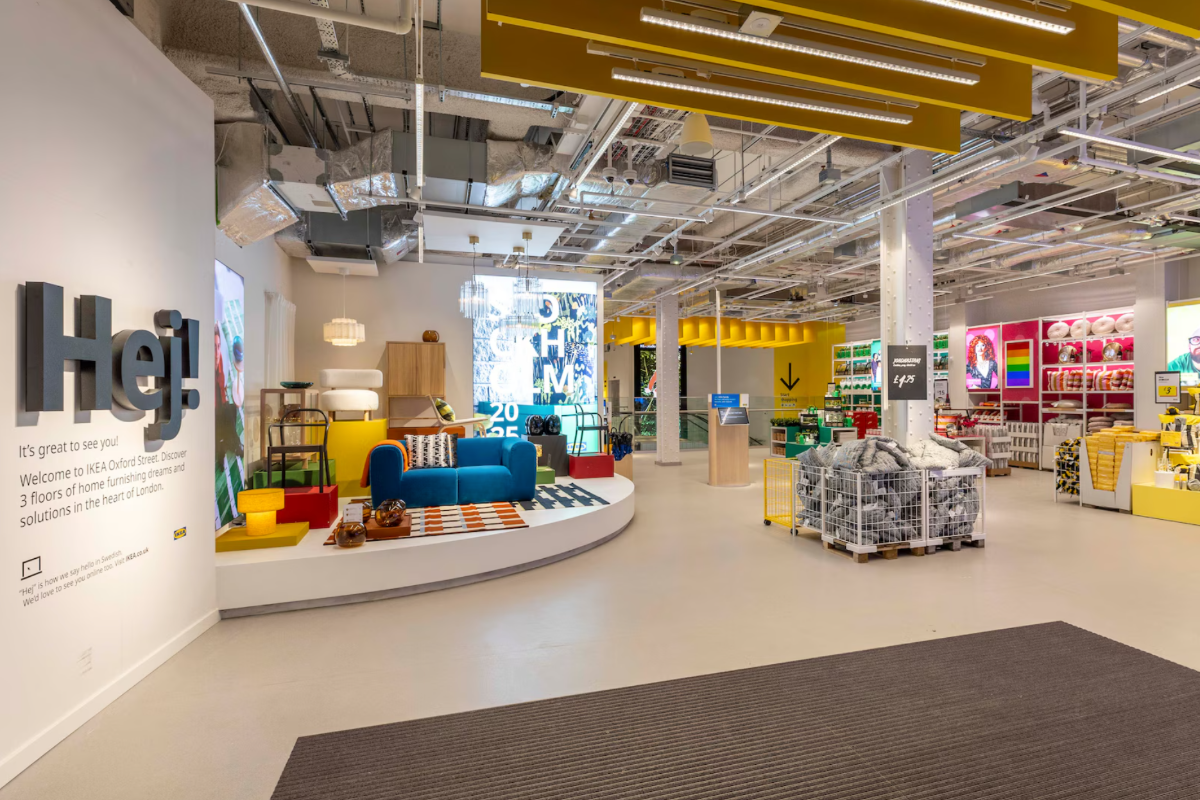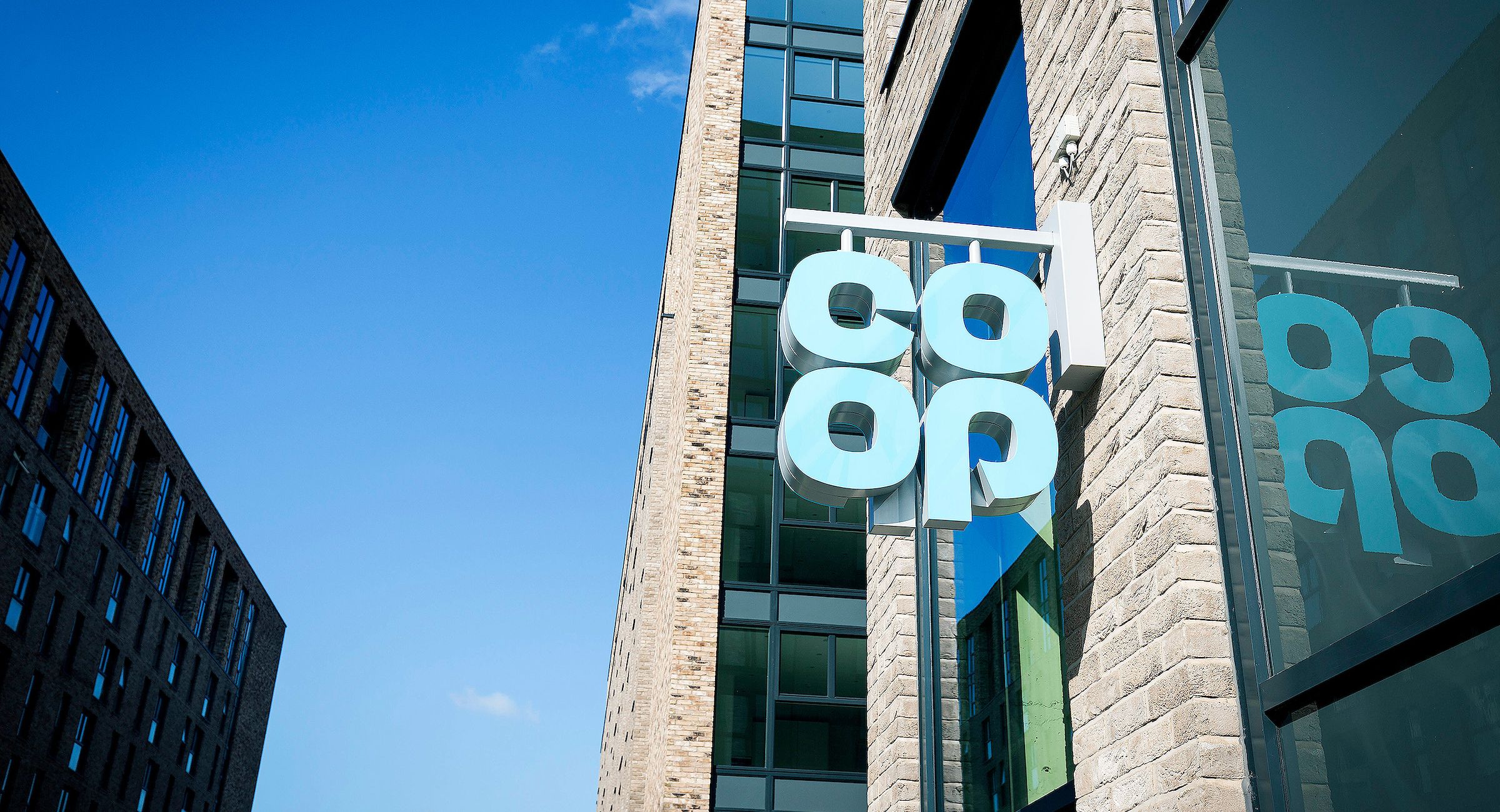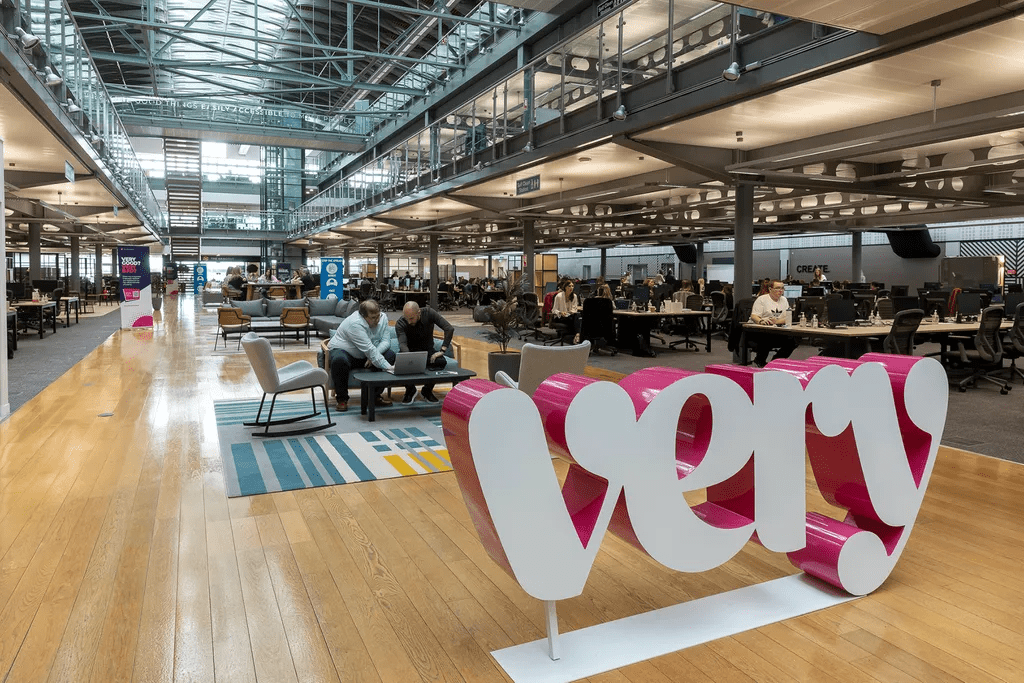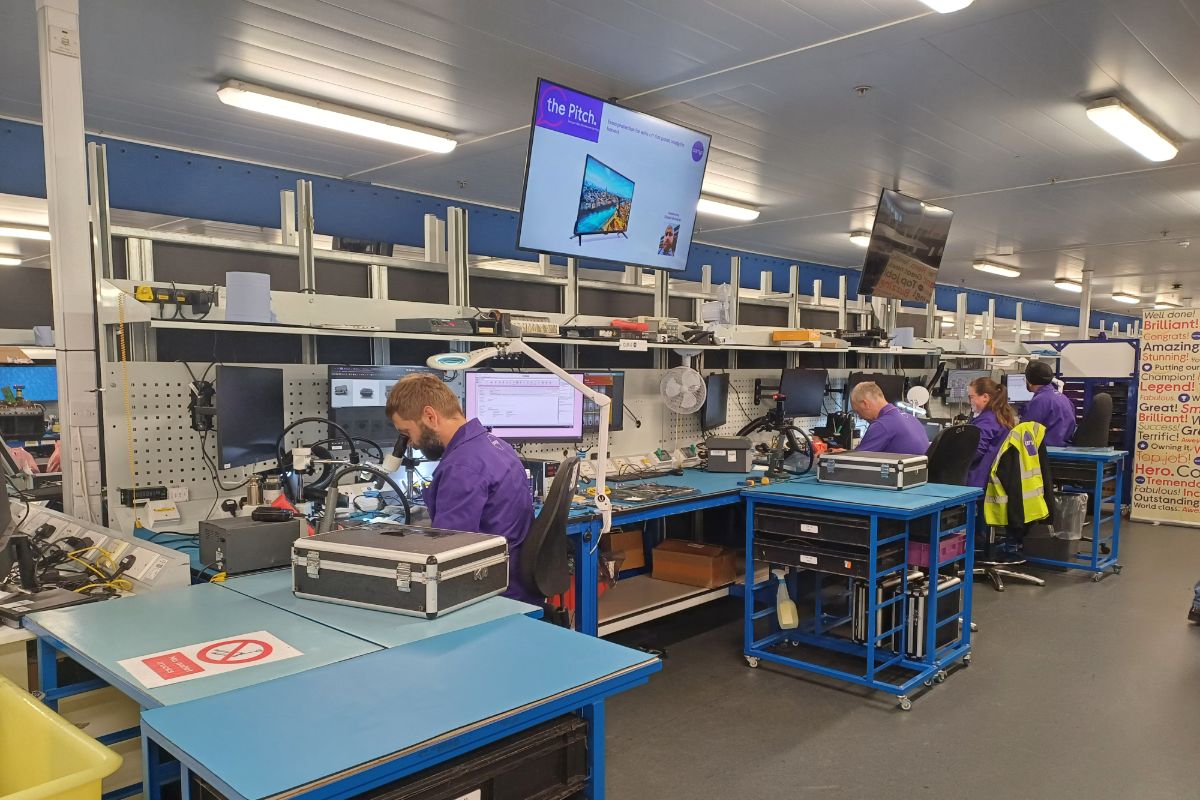Dixons Retail has been busy refurbishing its bricks and mortar estate so customers can better interact with the products. Emma Herrod catches up with its eCommerce Director David Walmsley to talk about business transformation, store refurbishment and replatforming ecommerce for a multi-channel future.
DIXONS RETAIL – or DSGi as it was known until recently – is one of Europe’s leading electricals retailing groups, operating 1,200 stores and online across 28 countries. Its retail and ecommerce brands in the UK are PC World , Currys , Dixons.co.uk and Dixons Travel. The group is part way through a transformation which has seen more than 200 of its stores in the UK refitted, with some being dual branded as Currys and PC World.
Ecommerce operations have been replatformed onto the eMerchant trading platform originated by the group’s Pixmania brand. The whole programme has been driven by customer insight, and recent trading figures and customer satisfaction scores seem to show that Dixons Retail is doing something right as it transforms itself from an ailing business that was facing tough times at the start of the recession into a multi-brand, multi-channel retailer poised for growth.
TRANSFORMATION & RENEWAL PLAN
The company’s Transformation and Renewal Plan was developed by Group Chief Executive John Browett following a review of the business’s strengths and weaknesses to identify which areas needed improvement.
With its strong branding across Europe and its leading position in a number of markets, the group had to its advantage the necessary scale, sourcing and good relationships with suppliers. However, Browett discovered that the business hadn’t kept pace with customers’ needs. It was overly focused on entry price points across its ranges rather than on giving customers the right product or an entire system. Customers were saying that they wanted better choices and service in store as well as postsale; they also wanted the stores to be more exciting places to shop.
During the review, Browett commented: “They [customers] talk endlessly about wanting us to sell them the whole solution. They say: ‘Don’t just sell me the product, sell me the service which goes with it, whether or not it is a subscription service or whatever, and sell me all the accessories so I can get the very best out of the products I have bought from you.’ Rather than selling them just the home cinema equipment, it’s actually about making sure they’ve got the right television, the right surround-sound to go with it, and that is a fundamental difference for our business.”
The review discovered that business processes were “a bit more inefficient and ineffective” than the group realised and that opportunities lay in raising operational performance and reducing costs so they could be reinvested in improving the customer experience.
Consequently, in May 2008, the company announced a five-point plan to transform the group, the first of which required a fundamental shift to get the business “absolutely focused on the customer and what they need”. The five points are:
- Focus on the customer (through an unbeatable combination of value, choice and service).
- Focus The Portfolio On Winning Positions (realise potential of UK market position, address unprofitable stores and chains, turnaround Italy).
- Transform The Business to broaden the choices for our customers and improve the in-store buying experience (wider choice for customers, improve the selling process, upgrade selling space, sell services more effectively).
- Win In The Internet Market (by growing our pureplay business and becoming the masters of multi-channel retailing).
- Reduce Our Cost Base By Simplifying Processes (simplification to make processes better, easier and cheaper, one set of business processes).
Since then, the five points have been worked on simultaneously across the company with executive restructuring, store closures, mergers and transformations taking place and one online trading and multi-channel platform being implemented group-wide.
When I caught up with the group’s eCommerce Director, David Walmsley, in September, more than two years into the plan, the business transformation was showing real results: profit before tax was up by 61%, customer satisfaction was increasing and store refurbishment was generating higher sales. Progress has been swift with 200 of its stores refitted in the new format by the end of July this year, and it’s on track to have completed the revamp of two thirds of its stores by October.
LEARNINGS FROM ACROSS THE BUSINESS
In realigning the business with the needs of today’s cross-channel customers, the whole organisation has been transformed – from in-store staff training and implementing new systems, to rolling out the group’s best elements across the operation. For example, the whole group has learned from the experiences of the Nordic region’s Elkjop brand, and the techniques it has used to develop a strong in-store and online business. “It has a strong customer focus,” explains Walmsley “and the key to the Nordic business is the value-choice-service triangle it operates.” This triangle is used to balance the three points of:
- getting the range right,
- getting service in store and post-sale and
- products at the right price in the right place.
“In the UK we had a very transactional ecommerce set-up that was based on the value element of the triangle,” he says. But that’s all changing. The group now aims to shift away from simply providing a competent online order-taking experience to offering a rounded shopping experience with add-ons and service to match the in-store offering. Walmsley adds: “We have doubled the range in the past year and will be working on the service element online in the coming months.”
ECOMMERCE
The group took the first step of the next stage of ecommerce development in February this year, when the online operations of Dixons, Currys and PC World were transferred onto Pixmania’s eMerchant platform. This move was key to its aim to ‘win on the internet’ as outlined in its five-point plan.
Pixmania has been using a variant of eMerchant for the past 10 years and it is available as a third-party trading platform for online operations. But the brand has been developing the platform over the past two years for use across the Dixons Retail group and to support cross-channel operations rather than functioning purely as an online trading platform.
“eMerchant was built by ecommerce traders for ecommerce traders,” says Walmsley, “and we have spent a lot of time building the multi-channel aspects and making sure that the integration with systems such as logistics and store systems was strong. There are some third-party elements to the platform, such as Omniture analytics, but the majority of it has been built in-house. It’s got us all to the same starting line, but we have to crack what value, choice and service looks like online and to roll that out across the group.”
He says that the group has identified a further four areas to focus on for future online and multi-channel development:
- Range – improve the breadth and depth of range to meet customers’ needs;
- Service – create the store experience online with reviews, support, advice and add-on services;
- Customer experience – give the customer a rounded shopping experience, helping them with browsing, choice and “making sexy products come alive on the site”;
- Multi-channel – give sophisticated multi-channel customers what they want.
“A lot of what we’ve been doing is getting the basics right,” adds Walmsley. He explains that the short-term focus for the ecommerce operation has been to drive footfall to stores over the past 12 months. The key focus over the next few months will be getting the customer experience right online.
THE CUSTOMER
Mobile is 2010’s retail growth channel in terms of development time and media column inches, but Walmsley says there’s no pressing need for Dixons Retail to launch a ‘me-too’ app; it has a role to play in the group’s operations, but only when it has anunderstanding of how mobile fits into the customer journey. He explains: “We have to look at how our customers shop with us and how they want us to help them. If it’s a mobile shopping app then that’s what we’ll do – but only once we’ve understood how mobile can fit into buying a washing machine, for instance.”
The transformation plan has ensured that all business decisions are driven by customer insights, whether it’s the format of stores, ranges or updates to back-end processes. Walmsley explains that the challenge is not about coming up with good ideas but prioritising them: “We keep going back to the customer and sequencing what’s the next best thing we can do for them. Everything we do hangs off the customer plan.”
STORE TRANSFORMATION
As the ecommerce side of the business has been undergoing a transformation, so too have the stores. Refits and new formats are being rolled out and include 60,000 square foot megastores with more than 10,000 products and two-in-one stores incorporating Currys and PC World under one roof. The combined stores, of which there are now 32, focus more on computing, consumer electronics and audio-visual products than the single-brand outlets and have 34% more skus. The average gross profit uplift in the first six weeks for these two-brand stores is 62%. Customer feedback has been very positive because the new stores are easier to navigate, have more interactive product displays such as ‘play tables’ and improved product ranges.
Other parts of the business will take on board the learnings from the current UK store refits and the megastore format.
STAFF V TECHNOLOGY
A staff training programme has been introduced to improve the in-store customer experience and to help employees understand the online business. Staff have to be able to listen to customers to understand what they want and how they will use the product they are interested in. “Product knowledge is the baseline,” says Walmsley. “They have to be able to help the customer make the purchasing decision that’s right for them.”
Television technology, for example, has moved on a lot in recent years, and store staff have to be able to explain the different technologies and how cabling can impact the end picture. The effectiveness of this knowledge – and the ability to explain it – is shown by Dixons Retail’s sales figures in the six weeks leading up to this year’s football World Cup when it sold 50% more televisions by value, year on year. That’s 30% more televisions by volume than sold during the run-up to the tournament four years ago.
The ‘FIVES’ plan which is used for store staff training introduced five simple steps for them to follow to identify the right products and service for each customer’s needs.
“Working with store colleagues is important,” says Walmsley. He adds that it is especially important to the success of a multi-channel business to make sure they are happy and focused on what is happening online. According to Walmsley, when aligning a large organisation, “the technology is the easy bit”. He explains that it’s important for store staff to understand how online forms part of the customer journey and to see how it represents their shop; online provides support for the stores and is the first port of call for a store visit.
“80% of customer trips in store start online,” he says, which means the stores need to be fully represented online. “We can do things differently with Dixons.co.uk since it operates purely online.”
THE TRANSFORMED BUSINESS
The Renewal and Transformation Plan is starting to deliver results and is expected to generate 3-4% returns in the medium term. But changing the business has not been without its difficulties. “The main pain point in implementing the plan to date has been doing it in a recession,” says Walmsley. It is an increasingly lean organisation, but investment put into the business during the recession has put us in a strong position for the upturn.
“The success of the plan is in a large part down to the triangular plan of choice, service and value. It’s not just one thing. It’s the operational processes across the business. Getting the basics right and meeting customers’ needs. This is leading to an increasingly strong position.”
This is evidenced in the confidence that suppliers are showing in the group. It was chosen as a launch partner for the iPad in the UK and introduced Apple shop-in-shops. This shop-in-shop model is proving successful and Phones4U shops are now being rolled out while Starbucks is already providing shoppers somewhere to mull over big ticket purchases without leaving the store.
Unsurprisingly, multi-channel is seeing higher growth than online alone. In its trading statement for the 12 weeks to 24 July 2010, the group announced a 3% increase in both total and like-forlike sales with UK internet sales up by 12% driven by its multi-channel and reserve and collect services.
While Walmsley won’t reveal specific figures, he says improvements in the group’s multi-channel operations are reflected in improvements in customer satisfaction, adding that “shoppers who shop more channels with us are more satisfied”.
So, what of the future? The entire business is now focused on the customer, and the multi-channel operations are pulling out all the stops to try to emulate the new, improved in-store customer service. The technology of the online operations is not expected to match the level of personalisation achievable by staff in store, but with time still left to run on the transformation plan and with “bigger ambitions” beyond reserve and collect, Dixons Retail in the UK could leap ahead in engaging customers, suppliers and store competitors alike as ecommerce catches up with the rest of the newlook business.






